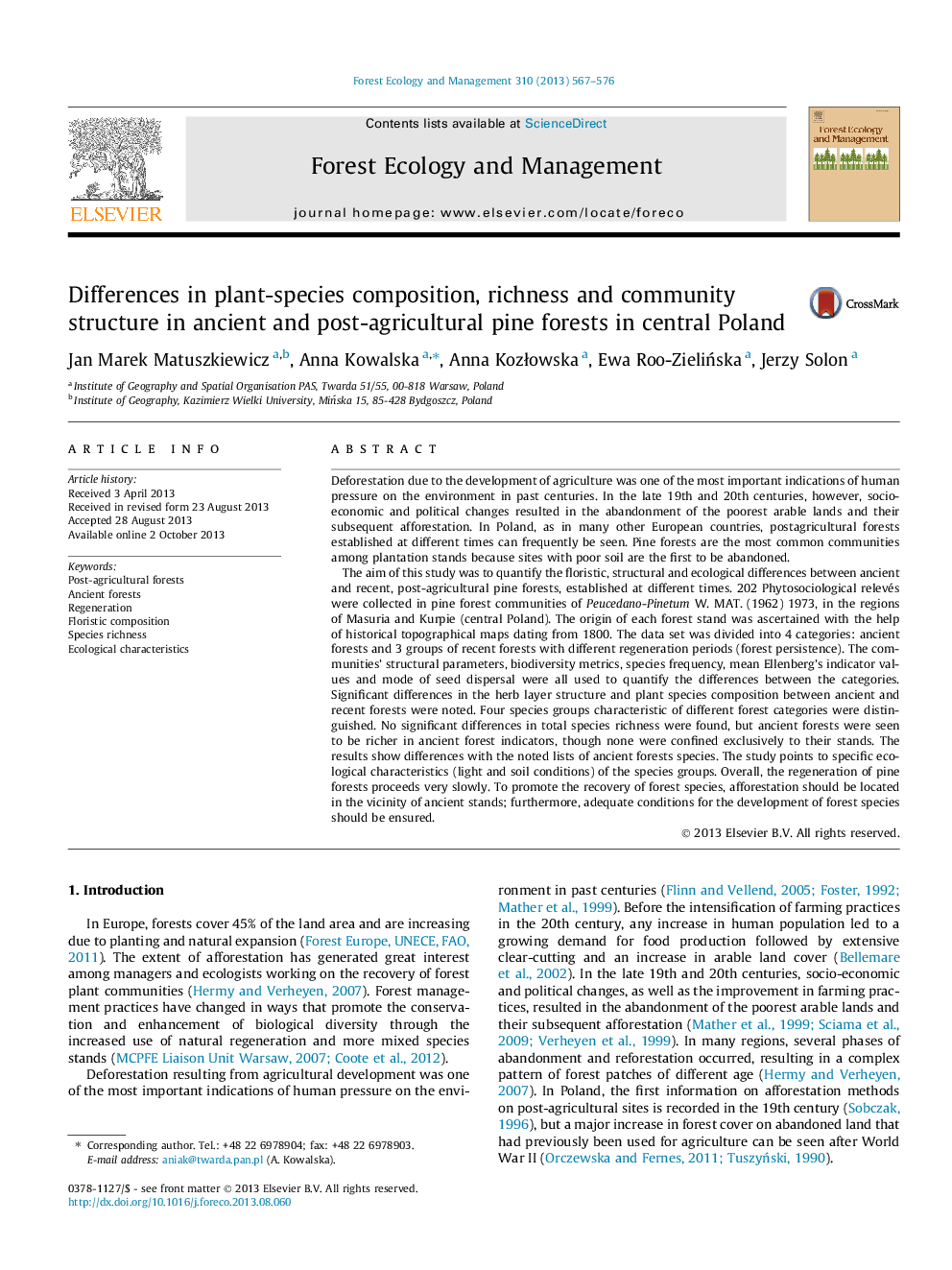| Article ID | Journal | Published Year | Pages | File Type |
|---|---|---|---|---|
| 6543792 | Forest Ecology and Management | 2013 | 10 Pages |
Abstract
The aim of this study was to quantify the floristic, structural and ecological differences between ancient and recent, post-agricultural pine forests, established at different times. 202 Phytosociological relevés were collected in pine forest communities of Peucedano-Pinetum W. MAT. (1962) 1973, in the regions of Masuria and Kurpie (central Poland). The origin of each forest stand was ascertained with the help of historical topographical maps dating from 1800. The data set was divided into 4 categories: ancient forests and 3 groups of recent forests with different regeneration periods (forest persistence). The communities' structural parameters, biodiversity metrics, species frequency, mean Ellenberg's indicator values and mode of seed dispersal were all used to quantify the differences between the categories. Significant differences in the herb layer structure and plant species composition between ancient and recent forests were noted. Four species groups characteristic of different forest categories were distinguished. No significant differences in total species richness were found, but ancient forests were seen to be richer in ancient forest indicators, though none were confined exclusively to their stands. The results show differences with the noted lists of ancient forests species. The study points to specific ecological characteristics (light and soil conditions) of the species groups. Overall, the regeneration of pine forests proceeds very slowly. To promote the recovery of forest species, afforestation should be located in the vicinity of ancient stands; furthermore, adequate conditions for the development of forest species should be ensured.
Related Topics
Life Sciences
Agricultural and Biological Sciences
Ecology, Evolution, Behavior and Systematics
Authors
Jan Marek Matuszkiewicz, Anna Kowalska, Anna KozÅowska, Ewa Roo-ZieliÅska, Jerzy Solon,
